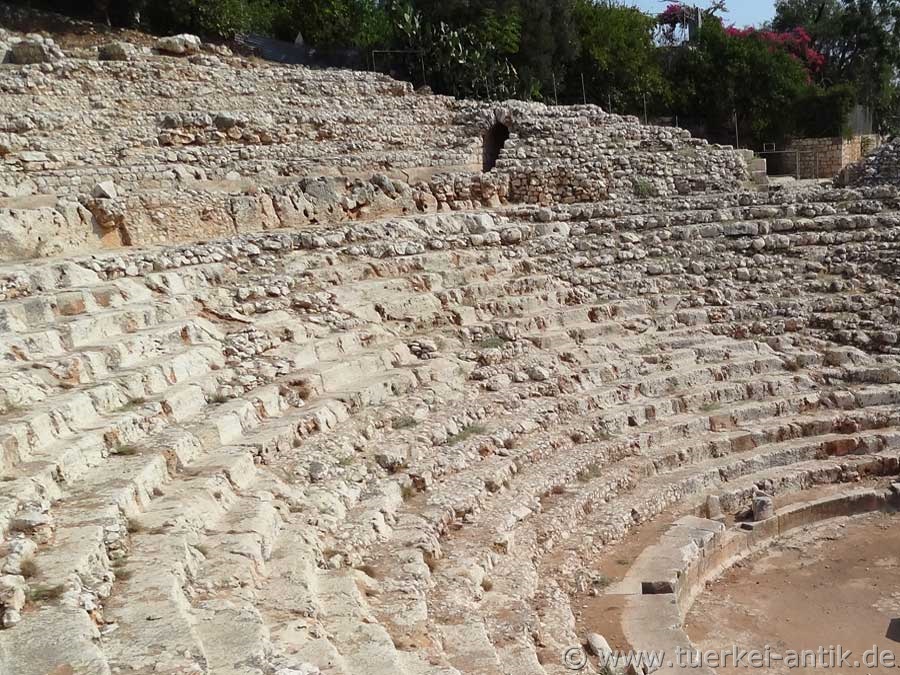 |
|
Ancient Theater in Turkey Elaiussa Sebaste |
||||||||||||
|
|
|
|||||||||||
|
||||||||||||
|
The construction of the theatre began in the first half of the 2nd century A.D., while the final phase of the construction dates back to the reign of the Roman emperors Mark Aurel and Lucius Verus (161 - 169 and 180 A.D., respectively). The theatre is divided into two ranks. The lower tier with its 15 rows of seats was carved entirely out of the rock, while the upper tier was partly built on a vault construction. |
||||||||||||
| The history of Elaiussa Sebaste: | ||||||||||||
|
Little is known about the pre-Roman history of the town of Elaiussa Sebaste, which was first mentioned in the early 1st century BC. The original centre of the town was located on an island directly on the coast, which, however, was soon silted up. The development of Elaiussa Sebaste was encouraged by its favourable location on the coastal road that in ancient times connected Asia Minor with Syria and the city's involvement in intensive trade in the region. Economically important for this were the extensive forests in the hinterland as wood suppliers and the cultivation of wine and olives (Greek elaion), on which the name of the place probably alludes. In 20 BC, the Roman emperor Augustus extended the empire of the Cappadocian clientele king Archelaos I by a part of the so-called "rough Cilicia" and by areas of small menias. The acquisition of the Cilician coastal strip was an occasion for Archelaos to move his residence from the Cappadocian Mazaka to the Cilician island of Elaiussa, where he had a palace built (a much more pleasant and more accessible island for travellers). Archelaos renamed the place "Sebaste" in honour of Emperor Augustus (after Sebastos, the Greek form of Augustus). In his palace in Elaiussa-Sebaste, Archelaos also received guests of the state, including his brother-in-law King Herod the Great of Judea. In 38 A.D. the city fell to Antiochus IV of Kommagene. Since 72 A.D. Elaiussa belonged to the Roman province of Cilicia. The decline of the city began in the 3rd century, especially with the conquest by the Sassanids in 260. In late antiquity it is documented as a diocese and probably continued until the invasion of the Arabs. |
||||||||||||
|
|
||||||||||||
|
|
||||||||||||
|
|
||||||||||||
 |
||||||||||||
|
|
||||||||||||
|
|
||||||||||||
|
|
||||||||||||
| The water pipe above the summa cavea | ||||||||||||
| Photos: @chim | ||||||||||||
| Translation aid: www.DeepL.com/Translator | ||||||||||||
| Source: Wikipedia and others | ||||||||||||
|
|
||||||||||||

